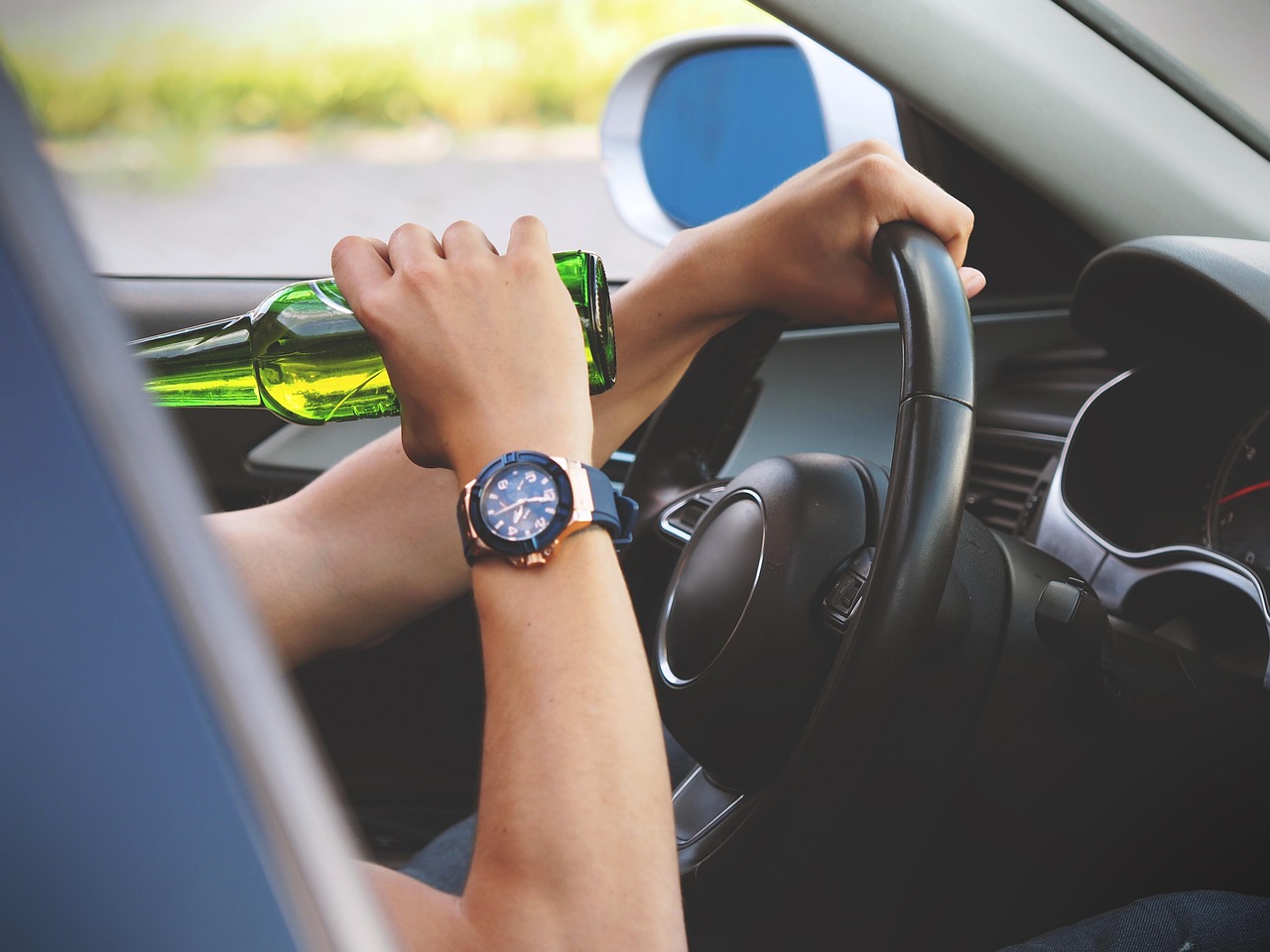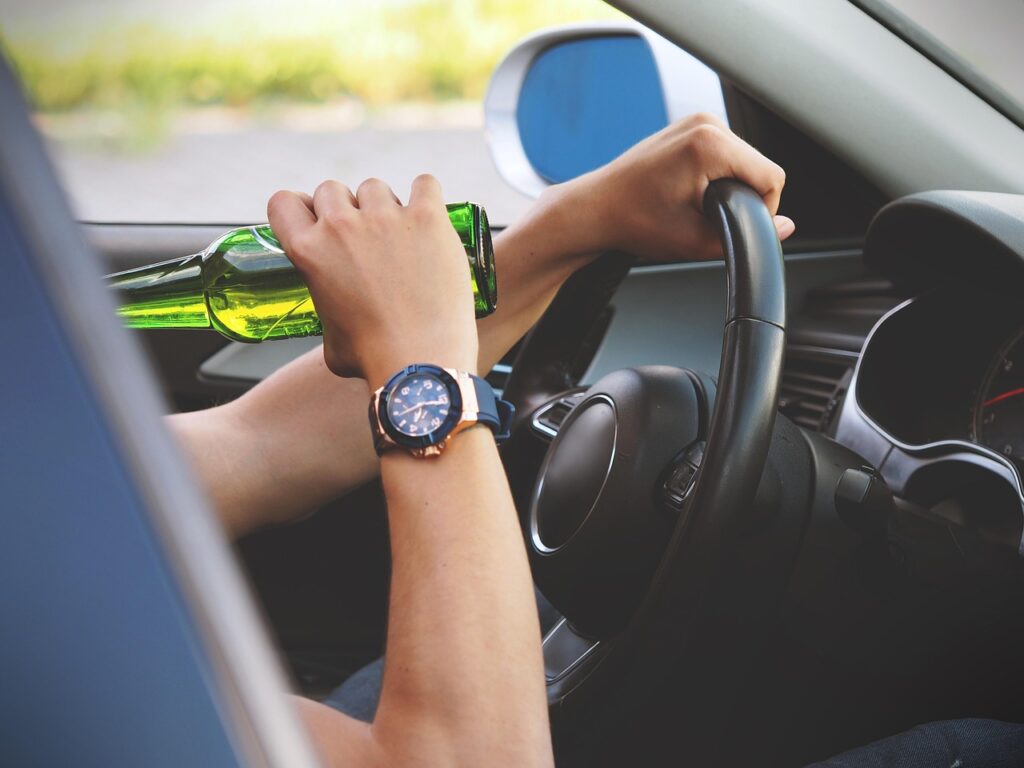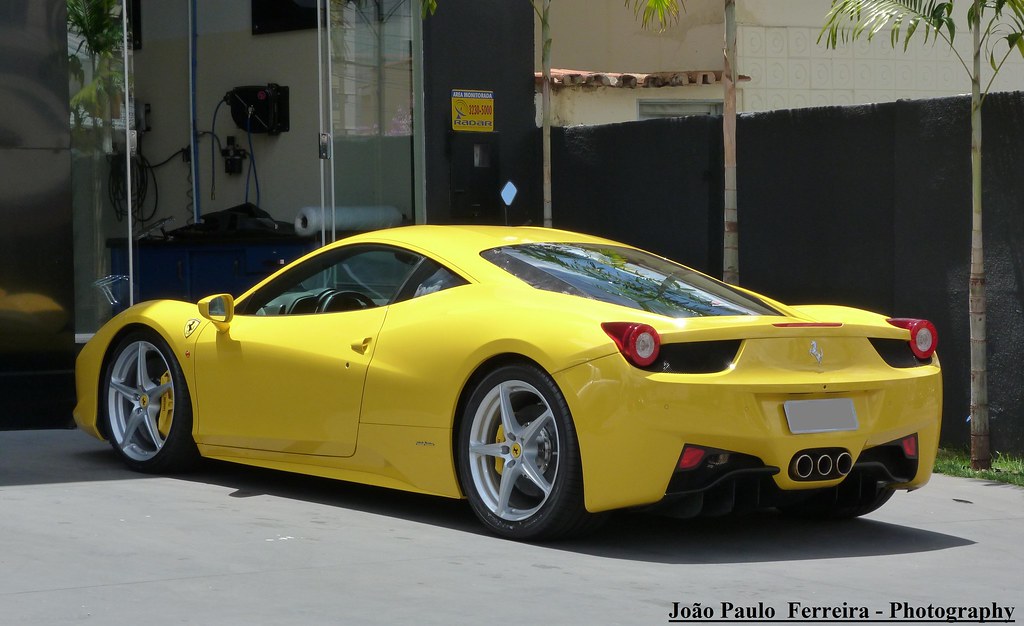In the vast landscape of contemporary television, few shows have captured the global imagination quite like Netflix’s ‘Stranger Things.’ Since its debut in 2016, the series has garnered widespread acclaim for its unique blend of horror, sci-fi, and adventure, creating a meticulously crafted world that resonates across generations. While the stunning visuals, captivating plotlines, and memorable characters are often lauded, an often-overlooked aspect of its unparalleled world-building lies in the strategic deployment of its automotive cast. The Duffer Brothers, creators of this phenomenon, have masterfully integrated vehicles not merely as props but as integral narrative devices.
Indeed, the choice of each car in ‘Stranger Things’ goes far beyond mere aesthetics; it represents a calculated decision to enrich the storytelling. These automobiles frequently reveal a character’s personality, their social standing, or their evolving journey within Hawkins, Indiana, long before their actions fully articulate it. From beat-up family sedans to aspirational luxury cars, each vehicle tells a story, contributing to the show’s authentic 1980s atmosphere and subtly influencing viewer perception.
This in-depth analysis will embark on a journey through the initial five most iconic cars from ‘Stranger Things,’ dissecting the strategic rationale behind their selection. We will explore how their real-world histories, engineering specifications, and cultural associations were expertly leveraged by the show’s producers to forge deeper connections between characters and the rich, ethereal world they inhabit. The meticulous attention to detail in these choices underscores a profound understanding of how visual elements can drive narrative, a testament to the show’s sophisticated production design.
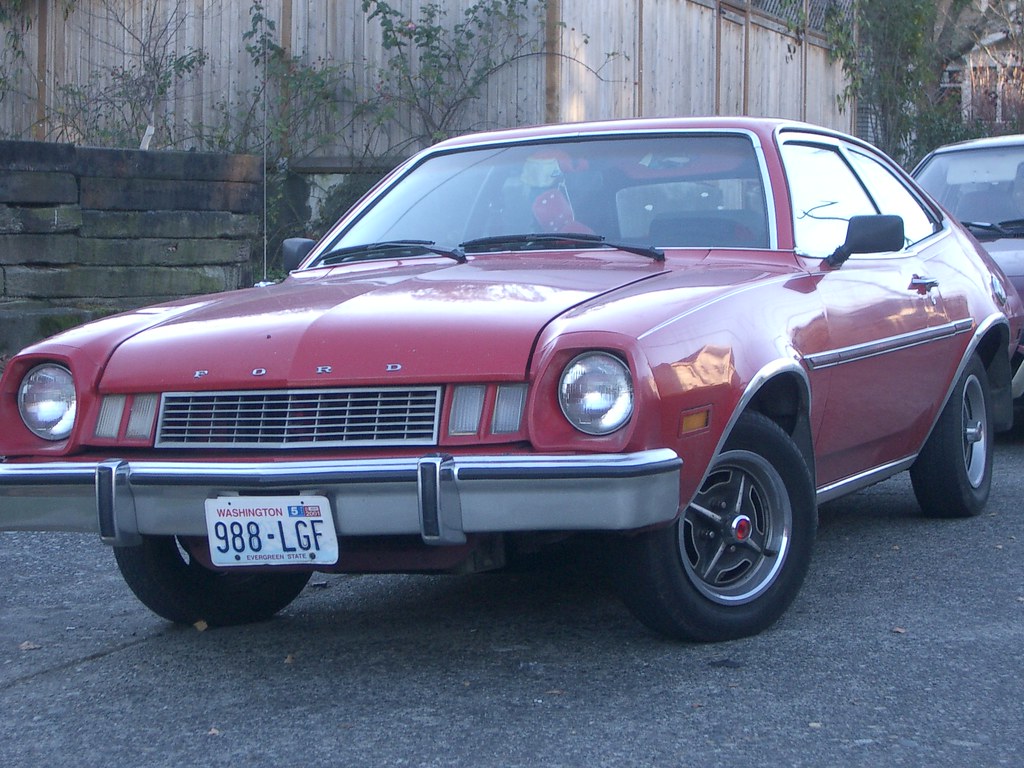
1. **Joyce Byers’ 1976 Ford Pinto**Joyce Byers, portrayed with raw intensity by Winona Ryder, stands out as “by far one of the most complex characters in the ‘Stranger Things’ universe.” Her personal narrative is fraught with anxiety, stemming from past abuse and exacerbated by a dire financial situation. The disappearance of her son, Will, at the hands of the Demogorgon, plunges her into an even more desperate struggle. Against this backdrop of vulnerability and relentless adversity, Joyce’s choice of transportation – a green 1976 Ford Pinto – emerges as a profoundly symbolic extension of her beleaguered existence.
The Ford Pinto itself carries a notorious legacy, becoming infamous for its propensity to catch fire in rear-end collisions. This reputation was not merely anecdotal; the vehicle “became notorious for catching fire, killing 27 people and injuring 24 more.” The root cause was a critical engineering flaw: a “poor engineering decision to put the fuel tank above the rear axle, whose protruding bolts punctured the tank in the event of a collision — even a mild one.” This inherent structural weakness in the Pinto mirrors Joyce’s own precarious position, constantly on the brink and battling against forces seemingly beyond her control.
Further compounding the Pinto’s grim reality was Ford’s approach to rectifying the issue. “Ford knew about the issue even during the development period,” with “fuel leakage” observed in early crash tests. Despite this knowledge, and the feasibility of installing “some kind of shield between the axle and the gas tank,” the automaker made a stark business decision to “go with the original setup to cut costs.” This cost-cutting mentality, prioritizing economy over safety, directly parallels Joyce’s constrained financial circumstances and the systemic neglect she and her family face, making the Pinto a poignant symbol of her struggles.
Beyond its safety controversies, the 1976 Ford Pinto was, by all accounts, “not a particularly exciting car.” Its base 1.6-liter engine mustered a mere 54 horsepower, with slightly more potent 2.0-liter (86 hp) and 2.8-liter V6 (100 hp) options available. Given Joyce’s circumstances, the text notes, “we doubt Joyce drove one of those,” implying she likely had the most basic, underpowered version. This lack of excitement and performance further entrenches the Pinto as a literal and metaphorical representation of her life – unglamorous, understated, and perpetually under siege, yet driven by an unwavering maternal will.
Car Model Information: 1978 Ford Pinto RUNABOUT HATCHBACK
Name: Ford Pinto
Caption: Ford Pinto
Manufacturer: Ford Motor Company
Aka: Mercury Bobcat
Production: September 1970 – July 1980
ModelYears: 1971–1980 (Pinto),1974–1980 (Bobcat)
Assembly: Edison, New Jersey,Milpitas, California
Designer: Robert Eidschun (1968)
Class: Subcompact car
BodyStyle: Sedan (automobile),sedan delivery,station wagon,hatchback
Related: #Mercury Bobcat (1974–1980),Ford Mustang (second generation)
Layout: Front-engine, rear-wheel-drive layout
Chassis: Unibody
Engine: unbulleted list
Abbr: on
Disp: Ford Cologne engine
Transmission: unbulleted list
Wheelbase: 94.0 in
Length: 163 in
Width: 69.4 in
Height: 50 in
Weight: convert
Predecessor: Ford Cortina#Mark II (1966–1970)
Successor: Ford Escort (North America)
Categories: 1980s cars, Articles with short description, Cars discontinued in 1980, Cars introduced in 1970, Commons category link from Wikidata
Summary: The Ford Pinto is a subcompact car that was manufactured and marketed by Ford Motor Company in North America from 1970 until 1980. The Pinto was the first subcompact vehicle produced by Ford in North America.
The Pinto was marketed in three body styles throughout its production: a two-door fastback sedan with a trunk, a three-door hatchback, and a two-door station wagon. Mercury offered rebadged versions of the Pinto as the Mercury Bobcat from 1975 until 1980 (1974–1980 in Canada). Over three million Pintos were produced over its ten-year production run, outproducing the combined totals of its domestic rivals, the Chevrolet Vega and the AMC Gremlin. The Pinto and Mercury Bobcat were produced at Edison Assembly in Edison, New Jersey, St. Thomas Assembly in Southwold, Ontario, and San Jose Assembly in Milpitas, California.
Since the 1970s, the safety reputation of the Pinto has generated controversy. Its fuel-tank design attracted both media and government scrutiny after several deadly fires occurred when the tanks ruptured in rear-end collisions. A subsequent analysis of the overall safety of the Pinto suggested it was comparable to other 1970s subcompact cars. The safety issues surrounding the Pinto and the subsequent response by Ford have been cited widely as business ethics and tort reform case studies.
Get more information about: Ford Pinto
Buying a high-performing used car >>>
Brand: Ford Model: Pinto
Price: $18,995 Mileage: 88,217 mi.

2. **Jonathan Byers’ 1971 or 1972 Ford LTD**Jonathan Byers, Joyce’s older son, navigates his own set of challenges, often overshadowed by his mother’s intense focus on Will and the lingering effects of his father’s destructive behavior. The series “presented as an underachiever by the series’ producers,” Jonathan is a character who, despite his quiet resilience and eventual heroism in the search for his brother, consistently finds himself struggling to assert his identity and agency. His vehicle, a beat-up 1970s Ford LTD, perfectly encapsulates this narrative of quiet struggle and overlooked potential.
The choice of a Ford LTD for Jonathan is a subtle yet powerful stroke of characterization. The car was “more than 10 years old when Jonathan drove it in the series, and was also quite beat up.” This condition strongly suggests it was an inherited vehicle, rather than a deliberate, aspirational choice, aligning with the idea that “the LTD definitely wouldn’t have been the first choice of a teenager.” It signifies a sense of being handed down circumstances, rather than actively choosing one’s path, a reflection of Jonathan’s often passive, observational role in the initial seasons.
Ironically, the Ford LTD was initially marketed by its manufacturer as a luxury car, aiming to provide “an alternative to Cadillac’s or Rolls-Royce’s luxury machines for the average buyer.” This positioning stands in stark contrast to the car’s practical reality, especially Jonathan’s well-worn model. Despite being equipped with a “385 Series V8 engine,” the LTD was characterized as “heavy, underpowered, and hugely uninspiring to drive.” The disparity between its intended market perception and its actual performance, particularly in Jonathan’s hands, underscores the unfulfilled potential and modest reality of his own life.
Ford had designed the LTD, based on the Galaxie 500 full-size line, with features intended to elevate its status. These included “classy interior trim, such as soft nylon tricot and deluxe carpeting,” alongside enhancements like “better sound insulation and equipped the body with torque boxes to increase riding comfort.” For Jonathan, however, these erstwhile luxury features are likely lost beneath years of wear and tear, serving instead as a quiet, almost melancholic, reminder of an aspirational past that never quite materialized for him or his family, further deepening his character’s nuanced portrayal.
Car Model Information: 2021 Ford F-150 XL
Categories: All article disambiguation pages, All disambiguation pages, Disambiguation pages, Short description is different from Wikidata
Summary: Ford LTD may refer to:
Ford LTD (Australia), a full-size car manufactured by Ford Australia from 1973 to 2007
Ford LTD (Americas), an automobile produced by the Ford Motor Company in North America from 1965 through 1986
Ford Galaxie, an automobile marketed as the Ford LTD in Brazil and produced by Ford Brasil from 1967 to 1983
Get more information about: Ford LTD
Buying a high-performing used car >>>
Brand: Ford Model: LTD
Price: $34,000 Mileage: 98,543 mi.
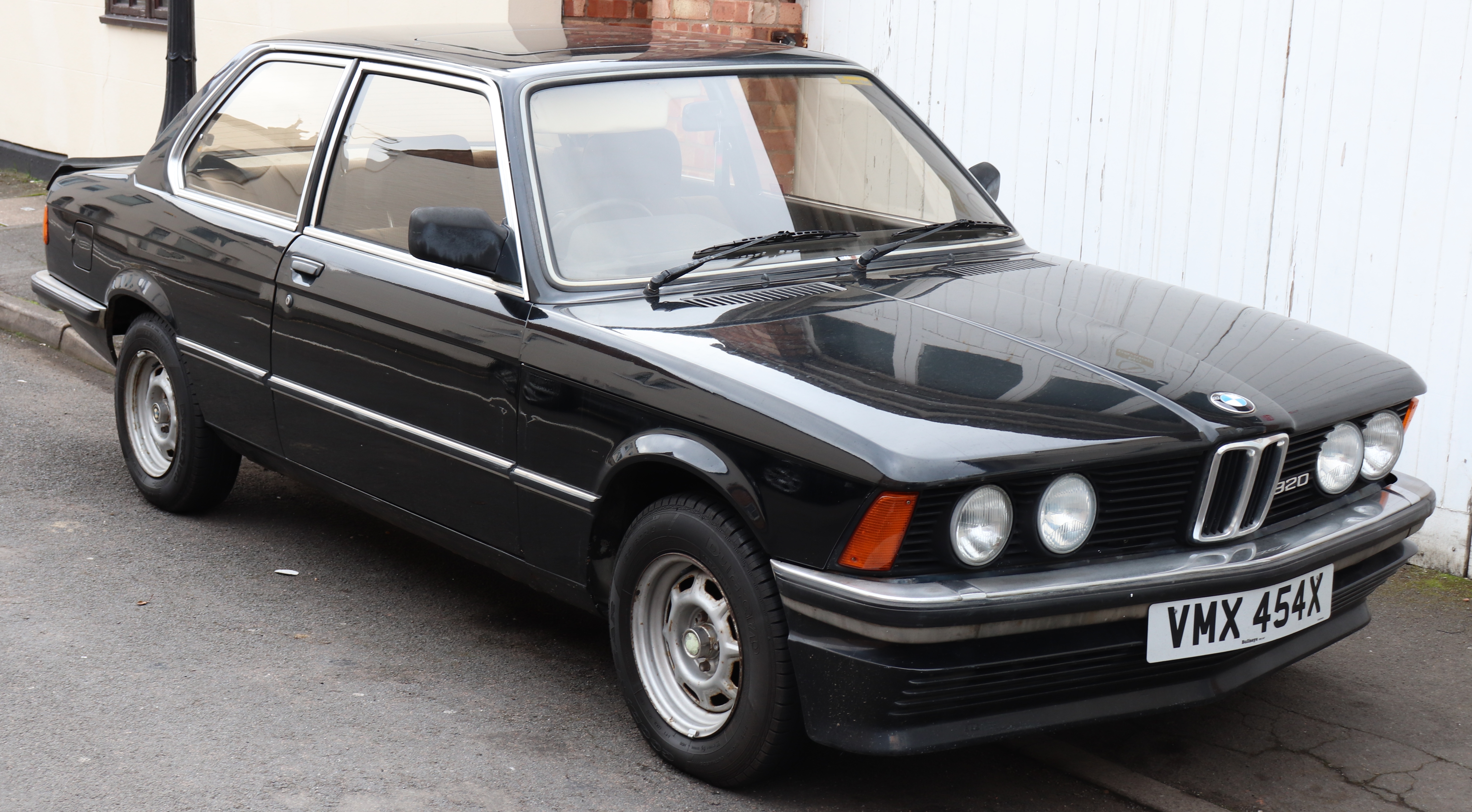
3. **Steve Harrington’s 1981 BMW 733i**In a striking automotive counterpoint to the Byers family’s vehicles, Steve Harrington’s 1981 BMW 733i immediately communicates his elevated social and economic status. Steve, portrayed by Joe Keery, “comes from a wealthy family and enjoys popularity in high school,” a stark contrast to Jonathan’s marginalized existence. The inclusion of such a high-end European import was a deliberate choice by the ‘Stranger Things’ creators, offering a visual shorthand for Steve’s privileged position within the Hawkins social hierarchy and his distinct persona.
The 1980s marked a significant period for BMW, and the 7-Series stood as the pinnacle of their luxury offerings. “In the 1980s, no BMW was more luxurious than the 7-Series.” Steve’s car, a first-generation E23 model, which was produced from 1977 to 1986, represented BMW’s ambitious “first entry into the highest echelon of the market dominated by the Mercedes S-Class.” This car was not just a mode of transport; it was a statement, signaling a blend of sophisticated engineering and upscale aspirations that perfectly matched Steve’s initially confident, almost aloof demeanor.
Performance-wise, the 733i was a formidable machine for its era. It came “equipped with a 3.2-liter inline-six engine that produced 194 hp and 206 lb-ft of torque.” Paired with a “standard four-speed manual transmission,” it could accelerate “to 62 mph in 8.9 seconds and had a top speed of 127 mph.” While the article acknowledges it was “Not a rocket, then,” it humorously adds, “but perhaps quick enough to escape a Demogorgon.” This blend of respectable speed and a “fully independent suspension” made it significantly “more manageable in the corners than the American idea of luxury at the time, the Ford LTD,” highlighting a European engineering philosophy focused on driving dynamics.
Luxury was a cornerstone of the 733i’s appeal, showcasing a suite of advanced features for its time. Owners could enjoy “power windows, central locking, leather trim, an electric sunroof, ventilation controls for the back seats, cruise control, heated seats, and even automatic air conditioning.” Beyond comfort, safety was also a paramount concern for BMW, with the 7-Series pioneering innovations; it was “the first BMW equipped with an anti-lock braking system (ABS).” These details reinforce the meticulous design choices, where Steve’s car not only speaks to his wealth but also to a certain technological forward-thinking associated with his character’s evolving role.
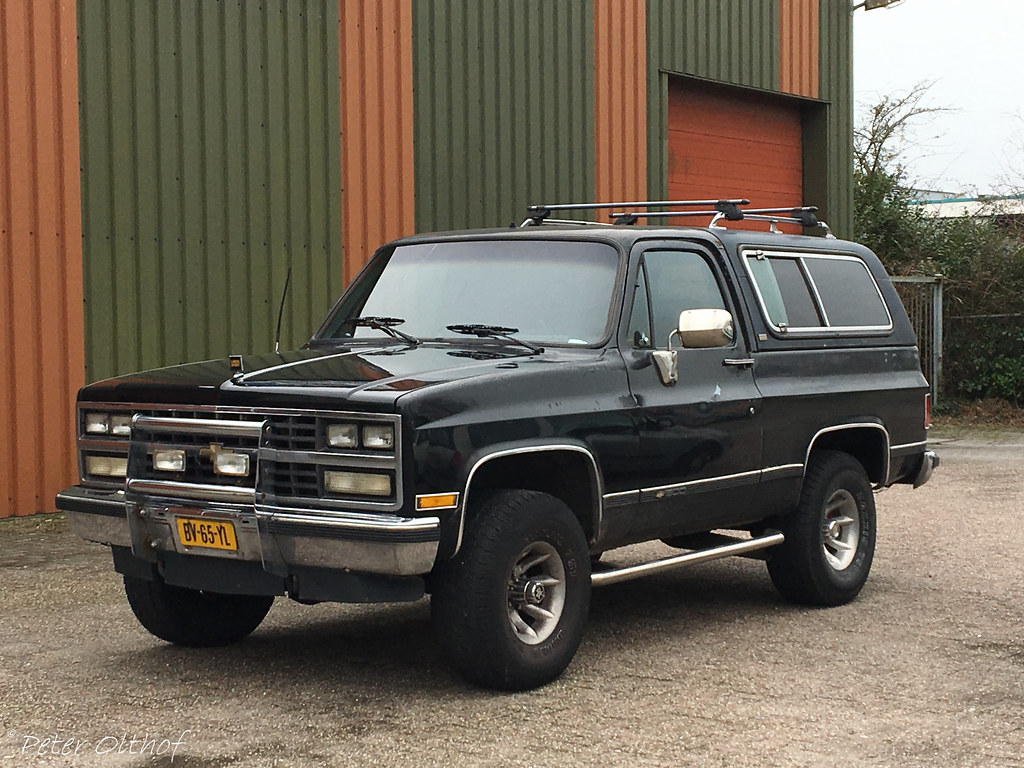
4. **Jim Hopper’s 1980 K5 Chevrolet Blazer**Jim Hopper, portrayed by David Harbour, has cemented his status as “one of the most beloved characters in the series.” Initially presented as “a masculine, no-nonsense character” and the Hawkins police chief, his journey reveals a profound transformation into “a loving and caring person” who is consistently resourceful and eager to help his community. The choice of his beige 1980 Chevy K5 Blazer police vehicle is a masterclass in automotive character branding, perfectly aligning with Hopper’s rugged persona and unwavering commitment.
The K5 Blazer is more than just a police cruiser; it is described as “a rugged SUV designed to tackle everything you throw at it,” and unequivocally, “the automotive embodiment of Jim Hopper.” Its “simple, macho looks” contribute to its enduring appeal, making the “old-school Blazer” a sought-after “retro option for off-road enthusiasts to this day.” This visceral connection between man and machine highlights the Duffer Brothers’ understanding of how a vehicle can amplify and solidify a character’s core attributes, making Hopper’s Blazer as iconic as his denim jacket.
The specific model year, 1980, was a strategic decision by the show’s creators. They were “smart to choose the 1980 model, which had the headlights and turning lights packaged into one neat frame.” This distinct aesthetic sets it apart from later iterations, as “Chevy redesigned the Blazer in 1981, giving it dual rectangular headlights.” The text even muses on the influence of the show, suggesting, “Or maybe we are under too much ‘Stranger Things’ influence,” implying that the show has imbued this particular year’s design with a heightened sense of iconic status.
Functionality was also key to the K5 Blazer’s success and its utility within the narrative. It “proved perfect for any road or terrain in Hawkins, as Chevy equipped the second-gen model with a full-time 4WD system,” essential for navigating the mysterious and often dangerous landscape of the town. Furthermore, its “imposing dimensions” ensured that “the K5 Blazer’s cabin was very spacious, too.” This practical advantage was not lost on the producers, who “shot many scenes inside the K5 Blazer,” utilizing its interior as a crucial setting for intimate character moments and strategic discussions.
Car Model Information: 2021 Cadillac Escalade Premium Luxury
Name: Chevrolet K5 Blazer,GMC Jimmy
Manufacturer: General Motors
ModelYears: 1969–1994
Assembly: Flint, Michigan,Janesville, Wisconsin
Class: Full-size,SUV
BodyStyle: SUV
Layout: Front-engine, rear-wheel-drive layout,rear-wheel drive
Successor: Chevrolet Tahoe
Related: Chevrolet Suburban,Chevrolet C/K
Caption: 1979 Chevrolet K5 Blazer Cheyenne
Categories: 1970s cars, 1980s cars, 1990s cars, All-wheel-drive vehicles, All articles with unsourced statements
Summary: The Chevrolet K5 Blazer is a full-size sport-utility vehicle (SUV) that was marketed by Chevrolet from the 1969 to 1994 model years. A variant of the C/K truck line, the K5 Blazer is a shortened version of the half-ton pickup line. For its first two generations, the model line was a half-cab pickup truck fitted with a removable rear top (effectively making it a three-door station wagon); the final generation was fitted with permanent rear bodywork. Initially offered solely as a 4×4, the K5 Blazer was also marketed with a rear-wheel drive configuration.
Alongside the longer-wheelbase Chevrolet/GMC Suburban wagon-style SUV (offered with three rows of seating and second-row doors), the K5 Blazer was marketed by GMC from 1970 to 1991 as the GMC Jimmy (reflecting a shorthand nickname for the brand). Though the K5 prefix was used on Chevrolet badging until 1988, GM never internally referred the Blazer/Jimmy as such. Following the 1983 release of the S-Series Blazer/Jimmy, to avoid market confusion, GM officially changed the model lines to “Chevrolet Full-Size Blazer” and “GMC K-Jimmy” (after 1986, V-Jimmy), though they are often unofficially still addressed as “K5” to avoid confusion.
For 1992, General Motors redesigned its entire full-size SUV lineup, with GMC renaming the Jimmy as the GMC Yukon. The full-size Blazer was replaced for 1995, as the Chevrolet Tahoe inaugurated a shorter-wheelbase variant of the Suburban. Currently, GM markets the Tahoe and Yukon alongside the Cadillac Escalade, and later resurrected the “Blazer” name for a midsize crossover SUV while Kia now uses the “K5” name for an unrelated midsize sedan.
Get more information about: Chevrolet K5 Blazer
Buying a high-performing used car >>>
Brand: Chevrolet Model: K5 Blazer
Price: $62,985 Mileage: 40,649 mi.
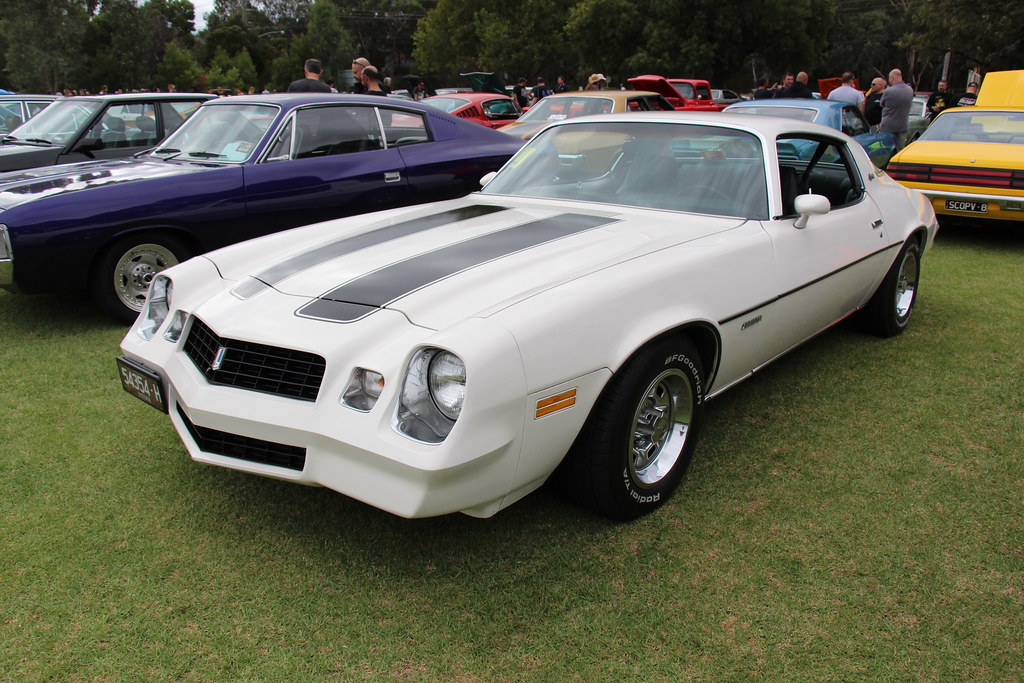
5. **Billy Hargrove’s 1979 Chevrolet Camaro Z/28**When Billy Hargrove, played by Dacre Montgomery, arrived in season 2 of ‘Stranger Things,’ his mission was clear: “to replace Steve Harrington as the new high school bully.” However, Billy escalated this role, bringing a “whole new level” of aggression and charisma, defined by his “particular passion for heavy metal and fast cars.” The vehicle chosen for him, a 1979 Chevrolet Camaro Z/28, was an inspired piece of casting, an aggressive and loud machine that perfectly mirrored its owner’s brash and domineering personality.
This “right set of wheels” for Billy was so integral to his introduction that “we were introduced to the Camaro before Billy.” This strategic decision immediately established his presence and character, effectively making the car an extension of his identity. The “second-gen Camaro Z/28” is celebrated as “one of the quintessential muscle cars of its era,” a powerful symbol of rebellious youth and assertive masculinity that perfectly encapsulates Billy’s disruptive force within the quiet town of Hawkins.
Under the hood, the 1979 Camaro Z/28 “packed a carbureted 5.7-liter small-block V8, good for 175 hp and 270 lb-ft of torque.” While the text notes, “Not much” in terms of raw power by today’s standards, it acknowledges the historical context: “the world was still recovering from the oil crisis, so fuel economy was also important.” Despite these constraints, Chevrolet’s engineers focused on balancing performance with practicality, evident in their increased emphasis on handling for this generation of the Camaro.
The Z/28’s performance was still respectable, capable of a “zero-to-60 mph time of 8.7 seconds when paired with a four-speed manual.” The availability of a three-speed automatic transmission was mentioned, but the character’s aggressive driving style and persona would undoubtedly favor the manual, emphasizing control and raw power. This muscle car, with its assertive roar and commanding presence, became an undeniable icon within the series, driving home Billy’s antagonistic role and his undeniable impact on the established social order of Hawkins.
As our exploration of the meticulously crafted automotive landscape of ‘Stranger Things’ continues, we shift focus to another quintet of pivotal vehicles. These cars not only contribute to the series’ distinct 1980s aesthetic but also profoundly deepen character portrayals, occasionally revealing subtle production insights and even factual discrepancies that underscore the show’s artistic liberties. From family wagons to utilitarian vans and unexpected luxury convertibles, each automobile holds a significant place in the narrative tapestry of Hawkins, Indiana, and beyond. This section will meticulously uncover the strategic choices behind these remaining five iconic rides, revealing their enduring impact on the series’ thematic depth and visual storytelling.
Car Model Information: 1968 Chevrolet Camaro
Name: Chevrolet Camaro
Manufacturer: Chevrolet
Production: 1966–2002,2009–2023
ModelYears: 1967–2002,2010–2024
Class: Pony car
BodyStyle: coupe,convertible
Platform: GM F platform,GM Zeta platform,GM Alpha platform
Layout: Front-engine, rear-wheel-drive layout
Categories: 1970s cars, 1980s cars, 1990s cars, 2+2 coupés, 2000s cars
Summary: The Chevrolet Camaro is a mid-size American automobile manufactured by Chevrolet, classified as a pony car. It first went on sale on September 29, 1966, for the 1967 model year and was designed to compete with the Ford Mustang. The Camaro shared its platform and major components with the Firebird, produced by General Motors’ Pontiac division that was also introduced for the 1967 model year.
Four distinct generations of the Camaro were developed before production ended in 2002. The nameplate was revived on a concept car that evolved into the fifth-generation Camaro; production started on March 16, 2009.
Production of the sixth generation of the Camaro ended in December 2023, for the 2024 model year.
Get more information about: Chevrolet Camaro
Buying a high-performing used car >>>
Brand: Chevrolet Model: Camaro
Price: $79,980 Mileage: 1,713 mi.
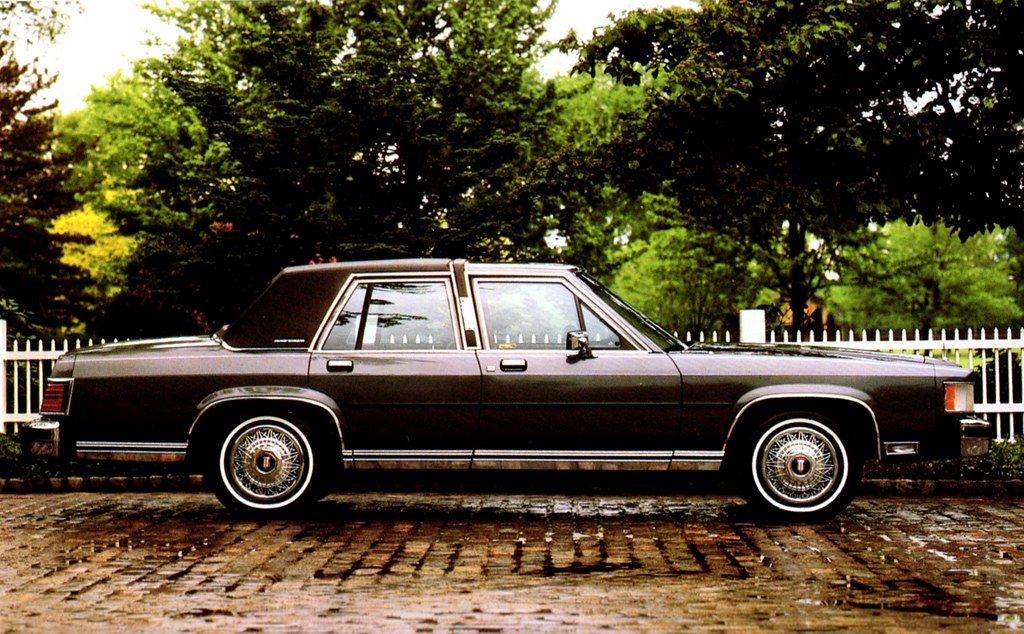
6. **Nancy Wheeler’s 1987 Mercury Grand Marquis Colony Park**Nancy Wheeler, a central protagonist in ‘Stranger Things,’ embodies bravery, sheer determination, and a rebellious spirit in her fight against the supernatural entities threatening Hawkins. Coming from a relatively conservative nuclear family, her primary mode of transport often reflects this background: the family’s 1987 Mercury Grand Marquis Colony Park wagon. This choice is a quintessential representation of the American family car of the era, a stark contrast to the otherworldly horrors Nancy confronts.
Powering this substantial wagon was a 5.0-liter V8 engine, which generated a respectable 160 hp and 280 lb-ft of torque. Paired with a standard four-speed automatic transmission, this powertrain was well-suited for its intended purpose. The combination allowed the Colony Park to accelerate from zero to 60 mph in 10.2 seconds, a commendable performance for such a massive vehicle.
Curiously, the show’s producers opted for a 1987 model, despite the first season being set in 1983, a notable factual discrepancy. However, the Colony Park’s inherently retro design, even for its supposed model year, allowed it to seamlessly blend into the series’ 1980s theme. This subtle anachronism demonstrates the creators’ priority of aesthetic and thematic resonance over strict chronological accuracy, ensuring the car perfectly matched the traditional yet increasingly complex Wheeler family dynamic.
Car Model Information: 2021 Cadillac Escalade Premium Luxury
Name: Mercury Grand Marquis
Caption: 2003-2004 Mercury Grand Marquis
Aka: Ford Grand Marquis (Mexico and Venezuela)
Manufacturer: Mercury (automobile)
ModelYears: 1975–2011
Class: Full-size
Platform: Ford Panther platform
Related: Ford LTD Crown Victoria,Lincoln Town Car
Predecessor: Mercury Marquis
Categories: 1970s cars, 1990s cars, 2000s cars, 2010s cars, All Wikipedia articles written in American English
Summary: The Mercury Grand Marquis is an automobile that was produced by Mercury from the 1975 until 2011 model years. Introduced as the flagship sub-model of the Mercury Marquis in 1975, the Grand Marquis became a stand-alone model line in 1983, serving as the largest Mercury sedan. The model line served as the sedan counterpart of the Mercury Colony Park station wagon up to 1991. The fourth generation was the basis of the 2003 and 2004 Mercury Marauder.
From 1979 until 2011, the Grand Marquis shared the rear-wheel drive (RWD) Panther platform with the Ford LTD Crown Victoria (Ford Crown Victoria after 1992), and from 1980, the Lincoln Town Car. For over three decades, the Ford and Mercury sedans were functionally identical, with two of the three generations of the model line sharing the same roofline. The Grand Marquis was available as a four-door sedan for nearly its entire run; from 1988 to its final year in 2011, it was the only body style that was offered. A four-door hardtop was available from 1975 to 1978 and a two-door hardtop coupe from 1975 to 1987.
The Grand Marquis was the second-best-selling Mercury line (after the Cougar) with 2.7 million units produced; at 36 years of continuous production, the Grand Marquis was the longest-running Mercury nameplate (the Cougar, 34 years). Ford manufactured the Grand Marquis, alongside the Mercury Marquis, Mercury Marauder, Ford (LTD) Crown Victoria, and (beginning in 2007) the Lincoln Town Car, at two facilities: the St. Louis Assembly Plant in Hazelwood, Missouri (1979–1985) and the St. Thomas Assembly Plant in Southwold, Ontario, Canada (1986–2011).
Ford announced the discontinuation of the Mercury brand in 2010, but a few 2011 model-year Mercurys were made. The last Grand Marquis – and the final Mercury branded car – was produced on January 4, 2011, at St. Thomas Assembly.
Get more information about: Mercury Grand Marquis
Buying a high-performing used car >>>
Brand: Mercury Model: Grand Marquis
Price: $62,985 Mileage: 40,649 mi.
7. **Argyle’s 1980s Volkswagen Vanagon Pizza Van**Argyle, portrayed by Eduardo Franco, emerged as a fan-favorite character in season four of ‘Stranger Things,’ injecting a much-needed breath of fresh air with his relaxed, California surfer boy persona, foolish attitude, and inclination towards getting high. As expected from someone who takes life with a laid-back approach, he works as a delivery boy for Surfer Boy Pizza, driving a distinctive pizza delivery van that perfectly encapsulates his unconventional personality.
The van in question is the Volkswagen EA162 Vanagon, recognized as the direct successor to the iconic Type 2 bus. Inheriting its predecessor’s unmistakable hippy vibe, the Vanagon is an ideal match for Argyle’s free-spirited and slightly detached demeanor. Its very presence on screen instantly communicates his character’s essence, making it an extension of his identity.
Similar to the Type 2 Bus, the Vanagon was typically equipped with small, air-cooled flat-four engines, with volumes ranging from 1.6-liter to 2.0-liter. While the specific engine in Argyle’s van remains unconfirmed, it is widely acknowledged that none of these configurations were particularly swift. Despite their modest performance, a 1980 Car and Driver review noted that the 2.0-liter Vanagon surprisingly glided with ease on the highway, highlighting its unassuming practicality.
Volkswagen later transitioned from air-cooled to water-cooled units for the Vanagon, though these newer engines were not renowned for their reliability. Today, the legacy of Volkswagen’s van evolution continues with the ID.Buzz, a retro-styled, all-electric van. Argyle’s Vanagon, however, stands as a symbol of his carefree approach to life, its functional yet unconventional nature perfectly aligning with his role as a quirky, yet ultimately helpful, ally in the ongoing battle against the Upside Down.
Car Model Information: 1988 Volkswagen Vanagon GL Camper Westfalia
Name: Volkswagen Type 2 (T3)
Manufacturer: Volkswagen
Aka: Volkswagen Transporter (Europe and Australia),Volkswagen Caravelle (Europe and Australia) ,Volkswagen (misnamed T25 in United Kingdom),Volkswagen Vanagon (North America and South America),Volkswagen Danfo or Faragon (Nigeria),Volkswagen Microbus (South Africa)
Production: May 1979 – June 2002
Assembly: Hannover,Graz,Uitenhage
Predecessor: Volkswagen Type 2 (T2)
Successor: Volkswagen Transporter (T4)
Class: Light commercial vehicle
BodyStyle: van
Layout: Rear-engine, rear-wheel-drive layout
Platform: Volkswagen Group T platform#T3
Engine: ubl
Transmission: Manual transmission
Wheelbase: cvt
Length: cvt
Width: cvt
Height: {{cvt,1928,mm,1
Weight: cvt
Sp: uk
Categories: 1980s cars, 1990s cars, All Wikipedia articles written in British English, All articles needing additional references, All articles with unsourced statements
Summary: The Volkswagen Type 2 (T3) is the third generation of the Volkswagen Transporter. It was marketed under various nameplates worldwide – including the Transporter or Caravelle in Europe and Australia, Type 25 (T25) in the UK, Microbus and Kombi in South Africa, Kampeerauto in Netherlands, Combi in France and Vanagon in North and South America.
It was larger, heavier, and more angular in its styling than its T2 predecessor, but shared the same rear-engine, cab-over design. It was produced in a rear wheel drive version as well as a 4WD version marketed as “Syncro.”
The T3 was manufactured in Hannover, Germany from 1979 until 1991. Production of the Syncro continued until 1992 at Puch in Graz, Austria, where all 4WDs were built. A limited number of 2WD models were also produced at the Graz factory after German production had ended. South African production of the T3 continued, for that market only, until 2002.
The T3 was the final generation of rear-engined Volkswagens.
Get more information about: Volkswagen Type 2 (T3)
Buying a high-performing used car >>>
Brand: Volkswagen Model: Vanagon
Price: $34,999 Mileage: 114,000 mi.
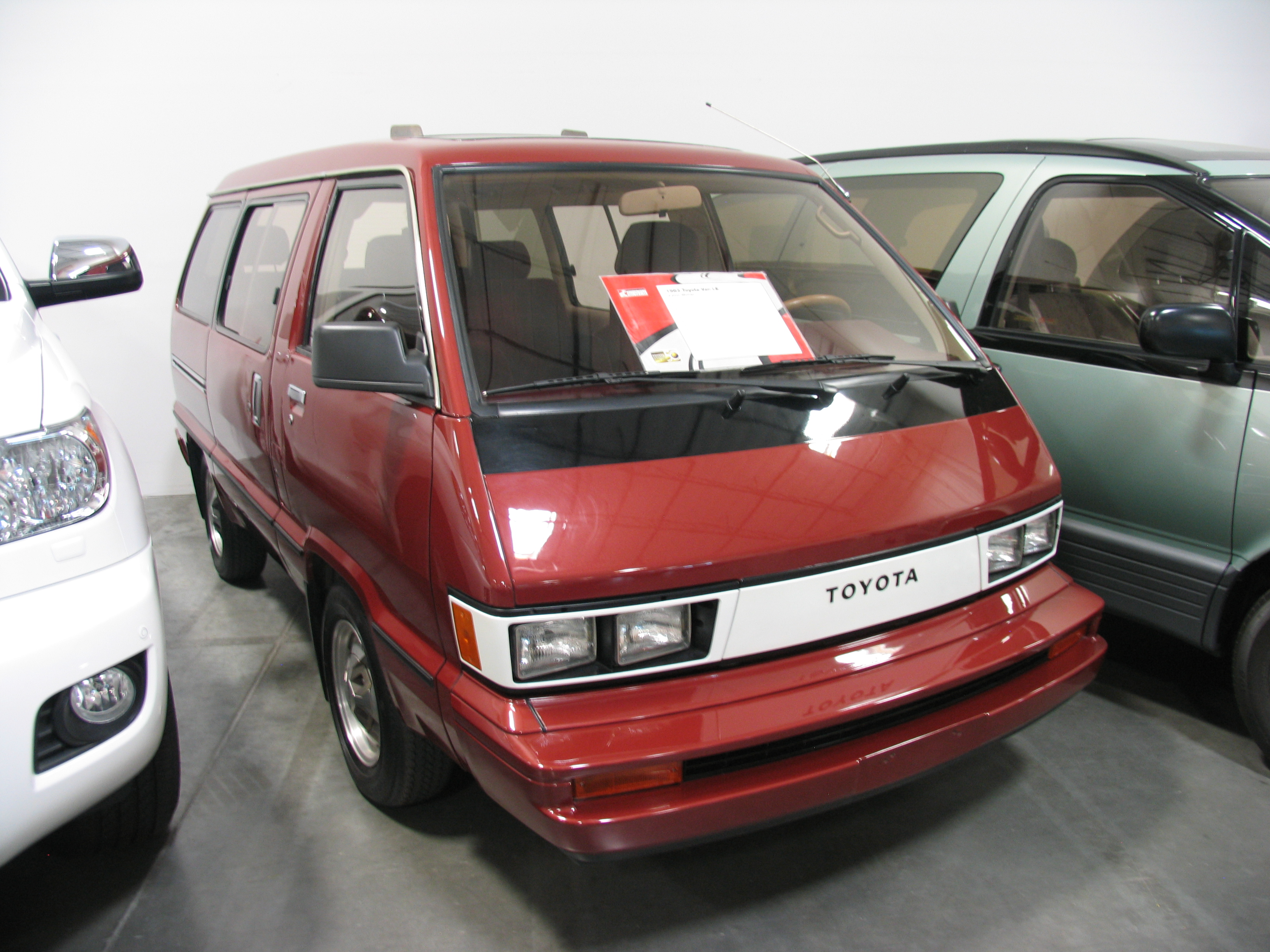
8. **Murray Bauman’s 1986 Toyota Cargo Van**The intricate narrative of ‘Stranger Things,’ often steeped in government cover-ups and clandestine operations, provides a fertile ground for characters like Murray Bauman. Portrayed by Brett Gelman, Murray is an investigative journalist and conspiracy theorist who, remarkably, is often proven right, making him an integral part of the series’ unfolding mysteries. His eccentric and peculiar personality is perfectly complemented by his choice of transport: a first-generation 1986 Toyota Cargo Van.
Fittingly, Toyota chose the utilitarian name “Van” for its first van introduced to the American market, a direct and unembellished approach mirroring the company’s past practice of naming its pickups simply “Pickup.” Initially, Toyota had intended to call it the “Van Wagon,” but this name bore too close a resemblance to Volkswagen’s “Vanagon,” prompting a legal threat from Volkswagen and forcing Toyota to adopt the simpler moniker.
In stark contrast to its German counterpart, Toyota’s Van boasted a more futuristic design, appearing quite striking from certain angles. For practical packaging reasons, its 2.2-liter engine, which produced 101 hp, was uniquely situated between the two front seats. It came standard with a five-speed manual transmission, and a 4×4 model was also available, adding to its versatility. This distinctly utilitarian yet somewhat unconventional vehicle perfectly suits Murray’s role as a resourceful, albeit quirky, investigator who frequently navigates the secretive underbelly of Hawkins.
Car Model Information: 2021 Cadillac Escalade Premium Luxury
Name: Tara Calico
Caption: Portrait of Tara Calico at age 16
BirthName: Tara Leigh Calico
BirthDate: [object Object]
BirthPlace: Belen, New Mexico
DisappearedDate: Disappeared date and age
DisappearedPlace: New Mexico State Road 47,New Mexico
DisappearedStatus: [object Object]
Nationality: American
Education: Belen High School (Class of 1987)
KnownFor: Missing person
Height: 5.5 to 5.7 inches
Mother: Patty Doel
Father: David Calico
Categories: 1969 births, 1980s missing person cases, 1988 in New Mexico, Articles with hCards, Articles with short description
Summary: Tara Leigh Calico (born February 28, 1969) is an American woman who disappeared near her home in Belen, New Mexico, on September 20, 1988. She is widely believed to have been kidnapped. In July 1989, a Polaroid photo of an unidentified young woman and boy, gagged and seemingly bound, was televised to the public after it was found in a convenience store parking lot in Port St. Joe, Florida. Family friends thought the woman resembled Calico and contacted her mother, who then met with investigators and examined the Polaroid. She believed it was her daughter after taking “time, growth and lack of makeup” into consideration, and noted that a scar on the woman’s leg was identical to one that Calico had. Scotland Yard analyzed the photo and concluded that the woman was Calico, but a second analysis by the Los Alamos National Laboratory disagreed. An FBI analysis of the photo was inconclusive.
Calico’s case received extensive coverage on television programs such as A Current Affair, Unsolved Mysteries, and America’s Most Wanted. It was also profiled on The Oprah Winfrey Show and 48 Hours.
Get more information about: Disappearance of Tara Calico
Buying a high-performing used car >>>
Brand: Toyota Model: Cargo Van
Price: $62,985 Mileage: 40,649 mi.
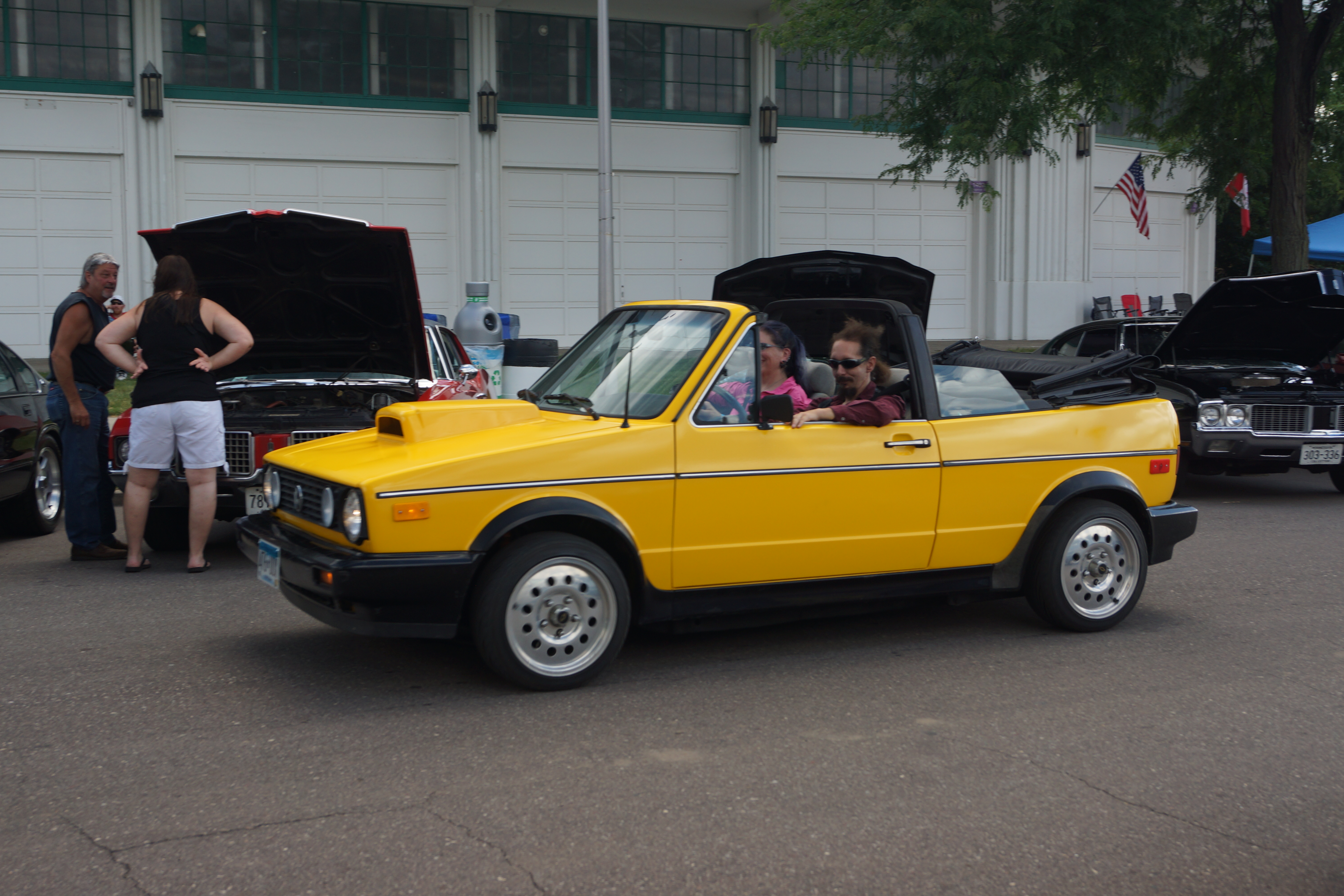
9. **Barbara Holland’s 1988 Volkswagen Cabriolet**Barbara Holland, affectionately known as Barb, was initially portrayed as a silent, geeky, and largely overlooked student. Despite the creators’ intention to present her as “uncool” through her dull clothing, Barb ironically drove a surprisingly cool car: a first-generation Volkswagen Cabriolet. Her tragic, early death in episode three unexpectedly transformed her into a beloved fan favorite, cementing her cult status within the ‘Stranger Things’ fandom.
The choice of the Cabriolet for Barb was far from incidental; it subtly communicated her background. Barb hailed from an upper-middle-class family, making the stylish convertible a fitting, albeit understated, symbol of her privileged upbringing. The exact 1988 Volkswagen Cabriolet used in the show even went up for sale in 2018 for $15,000, a price point clearly aimed at dedicated ‘Stranger Things’ enthusiasts and collectors.
As with Nancy Wheeler’s Mercury wagon, the production included a subtle factual error regarding the Cabriolet’s model year. Distinguishing features such as its plastic-covered bumpers and smaller inner headlights clearly indicate it is a 1988 model, yet season one of the series is definitively set in 1983. This anachronism, while minor, highlights the creative license taken by the show’s designers to achieve the desired visual aesthetic.
For those wondering about its name, this compact topless car was initially marketed as the Rabbit Convertible before being officially rebranded as the Cabriolet in 1985. Regardless of its nomenclature, the Cabriolet was never conceived as an enthusiast’s car, but rather a lifestyle vehicle. It appealed to those seeking a blend of open-air enjoyment and practicality, reflecting a certain understated aspiration.
The 1980 base model of the Cabriolet was equipped with a 1.6-liter engine producing 76 hp, resulting in a zero-to-60 time of 12.8 seconds. For drivers desiring a bit more performance, a version featuring the 90 hp, 1.8-liter engine from the Rabbit GTI was also an option. Every model featured a body expertly designed by Karmann Coachworks and a cloth roof that folded neatly into the car’s rear, providing a touch of class and convenience. Barb’s Cabriolet, therefore, serves as a poignant reminder of her hidden depths and the nuanced characterization that even minor details can convey.
Car Model Information: 1992 Volkswagen Cabriolet Base 2dr Convertible
Name: Volkswagen Golf
Caption: Volkswagen Golf Mk8
Manufacturer: Volkswagen
Production: 1974–present
Class: Compact car
Predecessor: Volkswagen Beetle
Successor: Volkswagen ID.3
Alt: grey car (hatchback)
Categories: 1980s cars, 1990s cars, 2000s cars, 2010s cars, 2020s cars
Summary: The Volkswagen Golf () is a compact car/small family car (C-segment) produced by the German automotive manufacturer Volkswagen since 1974, marketed worldwide across eight generations, in various body configurations and under various nameplates – including as the Volkswagen Rabbit in the United States and Canada (Mk1 and Mk5), and as the Volkswagen Caribe in Mexico (Mk1).
The original Golf Mk1 was a front-engined, front-wheel drive replacement for the air-cooled, rear-engined, rear-wheel drive Volkswagen Beetle. Historically, the Golf is Volkswagen’s best-selling model and is among the world’s top three best-selling models, with more than 35 million units sold as of 2019.
Initially, most Golfs were hatchbacks, with the three-door version being somewhat more popular than the five-door. Other variants include an estate (Variant, from 1993), convertible (Cabriolet or Cabrio, from 1979), and a Golf-based saloon called the Jetta, Vento (from 1992), or Bora (from 1999). The Golf covers economy to high-performance market segments.
The Golf has won awards, including the World Car of the Year in 2009, with the Mk6 and in 2013 with the Mk7. Along with the Renault Clio and the Vauxhall Astra, the Golf is one of only three cars to have won European Car of the Year twice, in 1992 and 2013. The Golf has made the annual Car and Driver 10Best list multiple times. The Mk7 won the Motor Trend Car of the Year award in 2015, and the Mk1 GTI also won the award in 1985. The Mk4 won for the best-selling car in Europe in 2001.
Get more information about: Volkswagen Golf
Buying a high-performing used car >>>
Brand: Volkswagen Model: Cabriolet
Price: $11,900 Mileage: 120,788 mi.
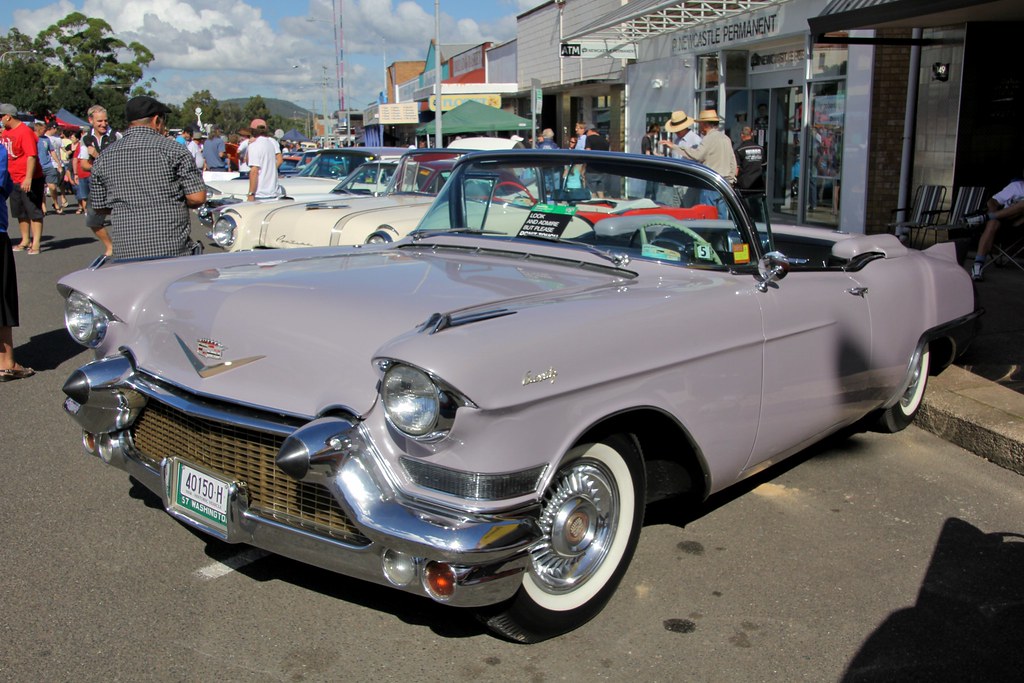
10. **Jim Hopper’s Stolen 1984 Cadillac Eldorado Biarritz Convertible**Following a dramatic chase in season three, episode five, Jim Hopper’s trusty K5 Blazer was engulfed in flames, prompting him to resort to a classic cinematic police maneuver: commandeering a vehicle from a surprised passerby at a gas station. The chosen vehicle for this impromptu escape was a beige 1984 Cadillac Eldorado Biarritz convertible, offering a significantly more luxurious and contrasting alternative to the earlier Volkswagen Cabriolet. This opulent vehicle symbolized a notable, albeit temporary, change of pace for Hopper, particularly after his escape from the Soviet prison as a profoundly changed individual.
The Eldorado Biarritz Convertible represented the epitome of plush convertibles during its era. Its interior exuded opulence, featuring high-quality, button-tufted leather, complemented by functional amenities such as automatic climate control and an AM/FM cassette radio. Furthermore, its powered soft cloth roof added to the vehicle’s luxurious appeal, establishing the Biarritz as one of the most desirable convertibles of the 1980s.
Despite its lavish exterior and comfortable interior, the Cadillac Eldorado Biarritz Convertible was decidedly not designed for sporty performance. It was powered by a 4.1-liter V8 engine, which produced a modest 135 hp and 200 lb-ft of torque. This engine was paired with a four-speed automatic transmission, prioritizing a smooth, comfortable ride over raw power.
As expected, the vehicle was notably slow off the line. Its zero-to-60 mph sprint time of 12.6 seconds was surprisingly similar to that of the less powerful 1.6-liter Volkswagen Cabriolet. This temporary, opulent ride for Hopper underscores his adaptability and resourcefulness, providing a moment of unexpected luxury amidst the relentless threats he faces, subtly reflecting his journey as a character continually navigating shifting realities.
Car Model Information: 2021 Cadillac Escalade Premium Luxury
Caption: 1963 Cadillac Eldorado Convertible
Name: Cadillac Eldorado
Manufacturer: Cadillac
Production: 1952–2002
Layout: Front-engine, rear-wheel-drive layout
Aka: Cadillac Fleetwood Eldorado
Class: Personal luxury car
Successor: Cadillac CTS
Categories: 1960s cars, 1970s cars, 1980s cars, 1990s cars, 2000s cars
Summary: The Cadillac Eldorado is a luxury car manufactured and marketed by the Cadillac Motor Car Division of General Motors from 1952 until 2002, over twelve generations.
The Eldorado was at or near the top of the Cadillac product line. The original 1953 Eldorado convertible and the Eldorado Brougham models of 1957–1960 had distinct bodyshells and were the most expensive models offered by Cadillac during those years. The Eldorado was never less than second in price after the Cadillac Series 75 limousine until 1966. Beginning in 1967, the Eldorado retained its premium position in the Cadillac price structure, but was manufactured in high volumes on a unique, two-door personal luxury car platform.
The Eldorado carried the Fleetwood designation from 1965 through 1972, and was seen as a modern revival of the pre-war Cadillac V-12 and Cadillac V-16 roadsters and convertibles.
Get more information about: Cadillac Eldorado
Buying a high-performing used car >>>
Brand: Cadillac Model: Eldorado Biarritz
Price: $62,985 Mileage: 40,649 mi.
The strategic deployment of these ten iconic automobiles throughout ‘Stranger Things’ stands as a testament to the Duffer Brothers’ unparalleled commitment to world-building and narrative depth. Each vehicle, meticulously selected and integrated, transcends its role as a mere prop to become an extension of character, a socio-economic indicator, and a vital element of the show’s immersive 1980s atmosphere. From reflecting personal struggles and aspirations to highlighting evolving character arcs and even introducing subtle production insights, these cars are integral to the series’ enduring appeal. Their presence not only grounds the supernatural narrative in a tangible past but also enriches the emotional resonance, proving that even seemingly minor details can drive significant storytelling, solidifying ‘Stranger Things’ as a masterclass in visual and thematic coherence for generations of viewers.

